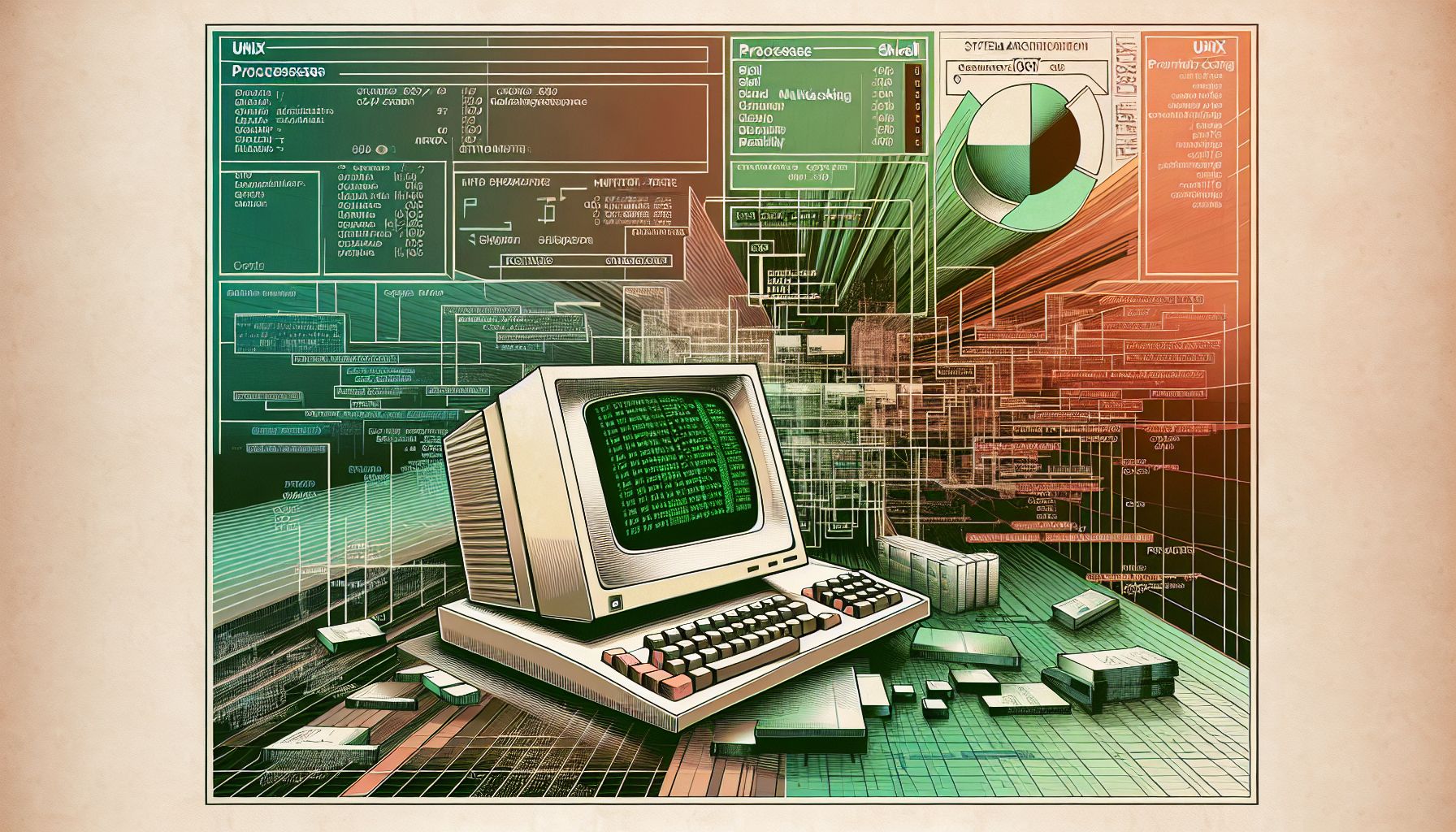📌 Let’s explore the topic in depth and see what insights we can uncover.
⚡ “Did you know that the bones of your slick, modern computer owe their architecture to the 1970’s UNIX operating system? Let’s dive into the history and significance of this game-changing platform!”
Have you ever wondered about the architectural underpinnings of your favorite websites, apps, or even the device you’re using to read this post? Chances are, they’re all powered by an operating system that has its roots in the 1970s. Yes, we’re talking about the UNIX operating system - the granddaddy of modern computing that has stood the test of time and continues to influence the digital world. In this post, we’ll journey back to the 1970s and uncover the role of UNIX in shaping the landscape of modern computing. Considered a pioneering force in the field of operating systems, UNIX’s influence goes far beyond just being an old player in the game. Its design and philosophy have essentially become the golden standard, shaping the core of how most modern operating systems function. Buckle up as we delve into the world of UNIX, its inception in the 1970s, its key principles, and how it continues to hold sway today.
🚀 The Dawn of UNIX: Back to the 70s

UNIX: The Unsung Hero of Modern Computing, 1970
The story of UNIX begins in the labs of AT&T’s Bell Laboratories in 1969. It was developed by a team of researchers who were frustrated with the limitations of the existing operating systems. The objective was to develop an operating system that was simple, elegant, and easy to use. This led to the birth of UNIX in 1970, an operating system that was written in simple ‘C’ language, making it extremely portable and versatile. To truly appreciate the genius behind UNIX, let’s draw an analogy. Think of UNIX as a LEGO set for programmers. A LEGO set contains different types of bricks that can be combined in countless ways to build whatever you can imagine. Similarly, UNIX provides a set of simple, powerful tools that can be combined in endless ways to perform complex tasks. This fundamental principle of modularity and reusability is a hallmark of UNIX and has greatly influenced modern computing.
⚙️ The UNIX Philosophy: Less is More
At the heart of UNIX lies a philosophy that is elegant in its simplicity. The UNIX philosophy emphasizes building simple, short, clear, modular, and extendable code that can be easily maintained and repurposed by developers other than its creators. The idea is to do “one thing and do it well,” resulting in a powerful system made up of several small utilities that work well together. Let’s use a kitchen analogy to illustrate this principle. Imagine if your kitchen had an appliance for every single task - a separate device for toasting bread, another for making coffee, yet another for frying eggs. It would not only be cluttered but also incredibly inefficient. Instead, we have versatile tools like the stove, oven, and blender that can perform a multitude of tasks. 🔍 Interestingly, essentially the UNIX philosophy - creating versatile and reusable utilities that can work together seamlessly.
🌐 UNIX and the Internet: A Match Made in Heaven
The 1970s also saw the birth of the Internet, and UNIX played a crucial role in its development. The Internet’s early infrastructure was built on UNIX machines due to their network capabilities and reliability. UNIX’s TCP/IP networking protocol became the backbone of the Internet and is still in use today. Imagine the Internet as a vast ocean and each website or online service as an island. The TCP/IP protocol serves as the shipping lanes, guiding the data packets (ships) to their correct destinations. Without UNIX’s networking capabilities, our online experience would be as chaotic as an ocean without shipping lanes.
💻 UNIX’s Legacy: The Rise of Linux and MacOS
Fast forward to today, and the influence of UNIX is apparent in two of the most widely used operating systems: Linux and MacOS. 🧠 Think of Linux as a UNIX clone, born out of the desire to create a free and open-source UNIX-like operating system. Most of the web today runs on Linux powered servers. MacOS, on the other hand, is a direct descendant of the UNIX operating system. 📌 In fact, based on BSD (Berkeley Software Distribution), which is a version of UNIX developed at the University of California, Berkeley. Every time you use your Mac or an iPhone, or when you browse a website, you are, in essence, using a product of the UNIX legacy.
🧭 Conclusion
The UNIX operating system, born in 1970, has had a profound and lasting impact on the world of computing. Its principles of simplicity, modularity, and versatility have not only stood the test of time but have also become the standard that most modern operating systems aspire to. Today, UNIX’s legacy lives on in the heart of the Internet and in popular operating systems like Linux and MacOS. So the next time you browse the web, send an email, or use an app, remember that you’re standing on the shoulders of a giant - the timeless UNIX operating system. From the 1970s to the present day and beyond, UNIX continues to shape the digital world we live in. It’s a testament to the enduring power of good design and clear thinking, reminding us that in the world of technology, old is indeed gold!
📡 The future is unfolding — don’t miss what’s next!
